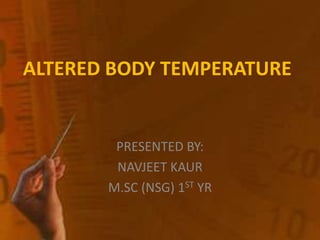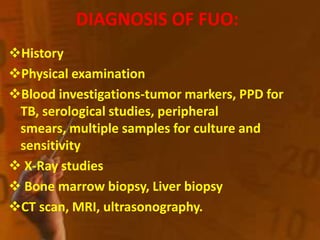This document provides an overview of altered body temperature, including fever, hyperthermia, hypothermia, and frostbite. It defines key terms, describes the physiology of thermoregulation, and outlines the causes, signs/symptoms, diagnostic findings, and management approaches for various conditions of elevated or reduced core body temperature. Nursing interventions are also summarized, focusing on ongoing assessment, rewarming or cooling techniques, and supporting patient comfort and hydration needs.



































































